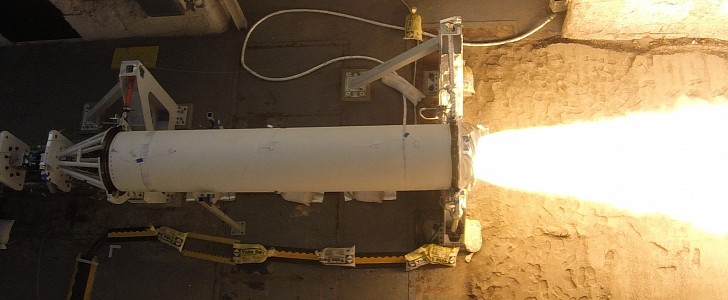On October 28th, the U.S. Navy, together with the U.S. Army, has successfully completed a static fire test of the First Stage Solid Rocket Motor (SRM) in Promontory, Utah. This brings the services one step closer to conducting a test flight of the common hypersonic missile.
This SRM test represents a significant milestone in the development of the common hypersonic missile that will be fielded by the services. The new weapon will be used by the Navy as part of its submarine-launched Conventional Prompt Strike (CPS) program, and it will be deployed by the Army on its Long Range Hypersonic Weapon (LRHW) weapon system.
The hypersonic missile will cut through the air at speeds greater than Mach 5, allowing for precise and rapid attacks. The weapon will enable warfighters to defeat deep inland targets from thousands of miles away in just a matter of minutes.
The recent live fire test builds upon the knowledge gathered from previous trials conducted in May on the first stage of the rocket motor, and in August, on the second stage SRM.
Now, the Navy has validated for the first time the thrust vector control system integrated into the first stage SRM. The thrust vector control system represents a crucial component of the missile booster that allows the rocket motors to be controlled during flight.
The final hypersonic missile will include the first stage SRM as part of a new missile booster paired with the Common Hypersonic Glide Body (CHGB). And it looks like it won't be long until the weapon is fielded by the services.
Both the Navy and the Army are ready to conduct the first flight test of the common hypersonic missile. The services will continue to work together to stay on track with the program.
''Today's successful test brings us one step closer to the design validation of our new hypersonic missile that will be fielded by both the Navy and the Army,'' said Vice Adm. Johnny R. Wolfe Jr, Director for Strategic Systems Programs.
The hypersonic missile will cut through the air at speeds greater than Mach 5, allowing for precise and rapid attacks. The weapon will enable warfighters to defeat deep inland targets from thousands of miles away in just a matter of minutes.
The recent live fire test builds upon the knowledge gathered from previous trials conducted in May on the first stage of the rocket motor, and in August, on the second stage SRM.
Now, the Navy has validated for the first time the thrust vector control system integrated into the first stage SRM. The thrust vector control system represents a crucial component of the missile booster that allows the rocket motors to be controlled during flight.
The final hypersonic missile will include the first stage SRM as part of a new missile booster paired with the Common Hypersonic Glide Body (CHGB). And it looks like it won't be long until the weapon is fielded by the services.
Both the Navy and the Army are ready to conduct the first flight test of the common hypersonic missile. The services will continue to work together to stay on track with the program.
''Today's successful test brings us one step closer to the design validation of our new hypersonic missile that will be fielded by both the Navy and the Army,'' said Vice Adm. Johnny R. Wolfe Jr, Director for Strategic Systems Programs.








